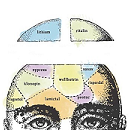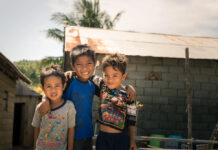A new study published in Suicide and Life-Threatening Behavior finds that structural adversity—such as food insecurity, housing instability, and parental incarceration—is strongly linked to suicide attempts, suicidal thoughts, and repeated self-injury among racially and ethnically minoritized youth. Led by Patricia I. Jewett of the University of Minnesota, the research shows that youth experiencing two or more of these structural adverse childhood experiences (ACEs) face a particularly high risk.
These findings challenge dominant psychiatric models that attribute suicide risk primarily to individual mental illness. Instead, the study underscores how systemic inequality, economic precarity, and state violence shape psychological suffering. The authors write:
“We found that SI, SA, and repetitive NSSI were strongly associated with having experienced structural ACEs (parental incarceration, housing instability, food insecurity, and recent foster care involvement). SI, SA, and repetitive NSSI rates were alarmingly high across all ethnoracially minoritized groups when two or more of these structural ACEs were reported, and were highest among Black Latino, AIAN, NHPI, and multiracial youth. Further, these same ethnoracially minoritized groups reported the highest structural ACE exposure levels.”
The study analyzed data from the Minnesota Student Survey, a statewide school-based survey that collects information on youth risk behaviors, mental health, and family circumstances. Researchers examined data from 93,573 students across three survey years (2013, 2016, and 2019), focusing on questions related to suicidal ideation (SI), suicide attempts (SA), and repeated nonsuicidal self-injury (NSSI).
They found that students who had experienced structural adversity had significantly higher rates of suicidal thoughts and behaviors. When young people faced multiple structural ACEs, their risk increased dramatically.
The study also highlighted significant racial and ethnic disparities. Black Latino, American Indian/Alaskan Native (AIAN), Native Hawaiian/Pacific Islander (NHPI), and multiracial youth reported the highest rates of structural adversity and, in turn, the highest levels of suicidal behavior and self-injury.
Rather than treating suicide and self-injury as personal medical conditions, the study suggests that addressing food security, housing access, and mass incarceration would be far more effective at reducing suicide risk. While mainstream mental health interventions focus on therapy and medication, they cannot provide the basic necessities needed for young people to survive and thrive.
















Another one knocked out of the park. I appreciate your perspective, Richard, and feel grateful for your contributions to my own self-development through education. Mad In America is a rose that grew from concrete.
Pax Jordana
Report comment
What is the point of this article?
Report comment
I love you Birdsong. I wanna be yr smoky sister.
Report comment
I love you, too No-one <3
Report comment
Obviously, I cannot speak for MIA or for Richard, Birdsong, but I believe that we all sense the truth of
“What you fight, you strengthen; what you resist, persists.”
“Consciousness: those annoying intervals between our naps.”
“The credibility of any piece of research is in inverse proportion to the ego of the researcher.”
“No problem is solved at the same level of consciosuness at which it was created, but only from higher, or deeper levels.”
“No one chooses evil because it is evil: We only mistake it for happiness, the good we seek.”
“There’s so much ‘good’ in the worst of us and so much ‘bad’ in the best of us that it ill becomes any of us to chat about ‘the rest’ of us.”
“The present politics is begging us to ask how we might create worlds without any need for politicians, governors, rulers or bullies.”
https://www.youtube.com/watch?v=maPJwbNNFxc
https://www.youtube.com/watch?v=PGA3SnY8XRI
My belief is that, like yourself, Birdsong, MIA and Richard and Jeff Bridges and Kevin Spacey and every single human being upon (or orbiting) this planet is playing her and his assigned role in the birthing of a new consciousness here for us all to enjoy.
Thank you!
Thanks, Richard!
And thank you, MIA and anyone who reads this, too.
Happy days, made up of joyful moments, one and all!
Tom.
Report comment
Beautifully chosen quotes of salience not just to MIA but to everyone, but for MIA I think the one to meditate on for now is “The credibility of any piece of research is in inverse proportion to the ego of the researcher”, and same too, if you observe, for the credibility of the article writer or blog post or whatever else you put on MIA. And as Birdsong has often observed, the ego of the quality of truth and credibility in any so called mental health professional is again proportionate to their ego or their egoistic grifts such as selling prescriptions. And yes, there is a new consciousness, but I fear it is not for everyone to enjoy who is alive here on Earth today: it is for us to ascend to by becoming lights unto ourselves in the outer world, i.e. not relying on external authorities, but more essentially, illuminating the inner world, which clearly you understand and I imagine are going through yourself, but the vast majority of people are going headlong in the wrong direction and will never be able to turn around in time. Such people may eclipse in blood and confusion as things stand today here on Earth, unless there is some enormous miracle beyond anything ever known in human historical memory, and without such a miracle it is impossible to see how humanity can stop itself destroying itself which if it didn’t it would be impossible to see how humanity could stop itself destroying the Earth which is it’s bedrock and infinitely more valuable then any of us, being part of us and the mother of all of us in the first place.
Report comment
Hmmm, thank you, No-one, and I am awfully glad to see you did not seem to take it too, too personally when I edited Mary, lest any female take offense at the ” no man,” No-one:
“No man chooses evil because it is evil; he only mistakes it for happiness, the good he seeks.” — Mary Wollstonecraft.
What you wrote, pointing out as it dies that we can at any or all times experience any miracles we choose in and from our own “interior castle,” or “the Kingdom, WithIN,” is as powerful a piece of persuading as I need, thank you
On my bike ride two mornings ago, I ran into Aubry, again, until recently a stranger to me, a long-legged lady who from a distance, as I told her, looks 19.
Aubry told me I should see her mom (clothes, I presume), as she is a great grandmother…
Aubry, who tells me she is 43, is herself a grandma
Aubry, who seems to me to survey our worlds with barely suppressed mirth and the likes of me with an amused “Why aren’t you cracking yourself up and having yourself an orgasm of joy right now like I always do?” kind of smile, isn’t a (dog-) walking miracle of stardust and sunshine, Birdsong: She is countless infinitudes of mirth-filled miracles all imploring our worlds to do what Adam Sandler, likewise, taught us we can all do at ANY moment –
“Go to your Happy Place,” ydoncha?
Richard has written to us to remind us that, though it may prove possible for us all soon to have the mastery (or mistressshood) to go to that happy place when in dungeons bound, as not EVEN Joan of Arc appears to have managed in her most recent public intarnation, we may not need places, either, but the basics would be REALLY nice?!
“Nothing real can be threatened; nothing unreal exists…”
So much more to say but, hey, if we are the Miracles, what can we not conceive, belie and achieve?!
Thank YOU, No-one!
Wishing you mirth and orgasms,
Tom.
Report comment
“The study also highlighted significant racial and ethnic disparities. Black Latino, American Indian/Alaskan Native (AIAN), Native Hawaiian/Pacific Islander (NHPI), and multiracial youth reported the highest rates of structural adversity and, in turn, the highest levels of suicidal behavior and self-injury.”
A number of years ago, I remember watching a documentary on indigenous youth and a range of negative outcomes associated with the loss of traditional ways of providing for families, community values and culture.
No doubt historical (and generational) trauma plays a significant role in young people whose ancestors were considered property, not people.
When I was growing up, organizations like the Black Panthers provided tangible forms of support within struggling communities throughout the US, making sure 10,000 school-age children had breakfast in a single year.
The same thing was true within Japanese communities in the US, where families who’d been interned made an ongoing commitment to preserve familial and cultural traditions, supporting other members of the community in reestablishing themselves when they returned to their neighborhoods.
Chronic poverty and the loss of meaning and culture affects individuals of all ethnic backgrounds, most noticeably when its roots are systemic and historical.
Report comment
Excellent article, thank you very, very, very much, indeed!
https://www.ted.com/talks/ruha_benjamin_is_technology_our_savior_or_our_slayer?user_email_address=79406b723e75dfb7e9fb541545bdee40&lctg=62d19b411c794c328c7dc8c1
Yes, we can and must and will dream up, conceive of, envison, and co-create worlds which are no more utopian than these, but in which we know the Hope which comes from knowing that we can, every last one of us, at any moment we choose, contribute to co-creating worlds in which every last one of us, at any moment we choose..
You get my drift? MY drift is that our worlds are neither “perfect” nor imperfect and more than theya re utopian or dystopian, but something at least infinitely better than perfect or utopian: They are at least infinitely and endlessly….perfectIBLE.
Well, that’s what I believe, anyway and, otherwise, I can hardly imagine how these could be the very best of all possible worlds, at the very least.
And we know that Who/Whatever was/is responsible for that last big bang, and for the Ruha Benjamin seed within it, is at least infinitely smarter and wiser and more loving and inclusive than we have been giving her credit for being…or for Being.
Don’t we?
Thanks, again, Richard Sears, and may you not only keep UP the great work but find that you can enjoy it daily with more and more power and more passion and ever more mirth and enthusiasm!
Tom.
Report comment